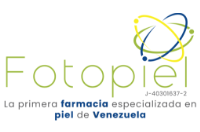EPIDEMIOLOGIA DE LA TUNGA PENETRANS EN VENEZUELA
Palabras clave:
tungiasis, epidemiología, tunga, penetrans, epidemiologyResumen
La tungiasis es una condición inflamatoria de la piel producida
por la infestación parasitaria cutánea de la pulga Tunga
penetrans. Se considera la pulga más pequeña conocida (1
mm.) y se describe ampliamente distribuida en los trópicos. El
objetivo de esta presentación fue determinar su presencia en
el territorio nacional y determinar la importancia así como las
consecuencias que tiene su presencia tanto a nivel de los
servicios de salud como en la comunidad. En los resultados la
encontramos ampliamente distribuida en todo el territorio a
predominio de zonas de abundante arena y en cochineras. Las comunidades que sufren los mayores estragos son las
poblaciones indígenas del Amazonas quienes como única
medida de librarse de su presencia, en ocasiones (cuando se
ven masivamente infectada por la pulga), se han visto
obligadas a abandonar el chabono.
Se discute el ciclo de vida, la distribución mundial, hábitat, así
como el tratamiento y las medidas profilácticas.
ABSTRACT
Tungiasis is a n inflammatory skin condition produced by
parasitic cutaneous infestation by the Tunga penetrans flea. It
is considered to be the smallest known flea (1 mm) and has
been described as widely distributed in the tropics. The
objective of this presentation has been to determine its
presence in the national territory and to determine its
importance as well as the consequences of its presence in
health services and in the community. We found it widely
distributed throughout the country predominating in zones with abundat sand and in pig farms. The communities which Buffer the worst consequences are the indigenous Amazon
populations, who may find themselves forced to abandon heir
communal residences as their only measure of freeing
themselves from the presence of the flea in cases of massive
invasion. The life cycle, world-wide distribution, habitat,
treatment and prophylactic measures ar discussed.
Descargas
Número
Sección
Licencia
Publicado por la Sociedad Venezolana de Dermatología Médica, Quirúrgica y Estética







